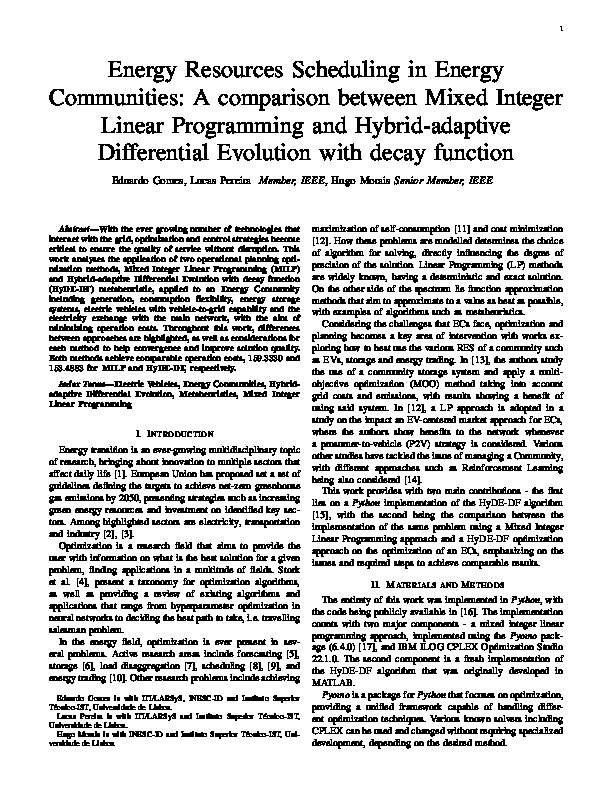Energy Resources Scheduling in Energy Communities: A Comparison Between Mixed Integer Linear Programming and Hybrid-adaptive Differential Evolution with Decay Function
Abstract
With the ever growing number of technologies that interact with the grid, optimization and control strategies become critical to ensure the quality of service without disruption. This work analyses the application of two operational planning optimization methods, Mixed Integer Linear Programming (MILP) and Hybrid-adaptive Differential Evolution with decay function (HyDE-DF) metaheuristic, applied to an Energy Community including generation, consumption flexibility, energy storage systems, electric vehicles with vehicle-to-grid capability and the electricity exchange with the main network, with the aim of minimizing operation costs. Throughout this work, differences between approaches are highlighted, as well as considerations for each method to help convergence and improve solution quality. Both methods achieve comparable operation costs, 159.3330 and 153.4883 for MILP and HyDE-DF, respectively.

